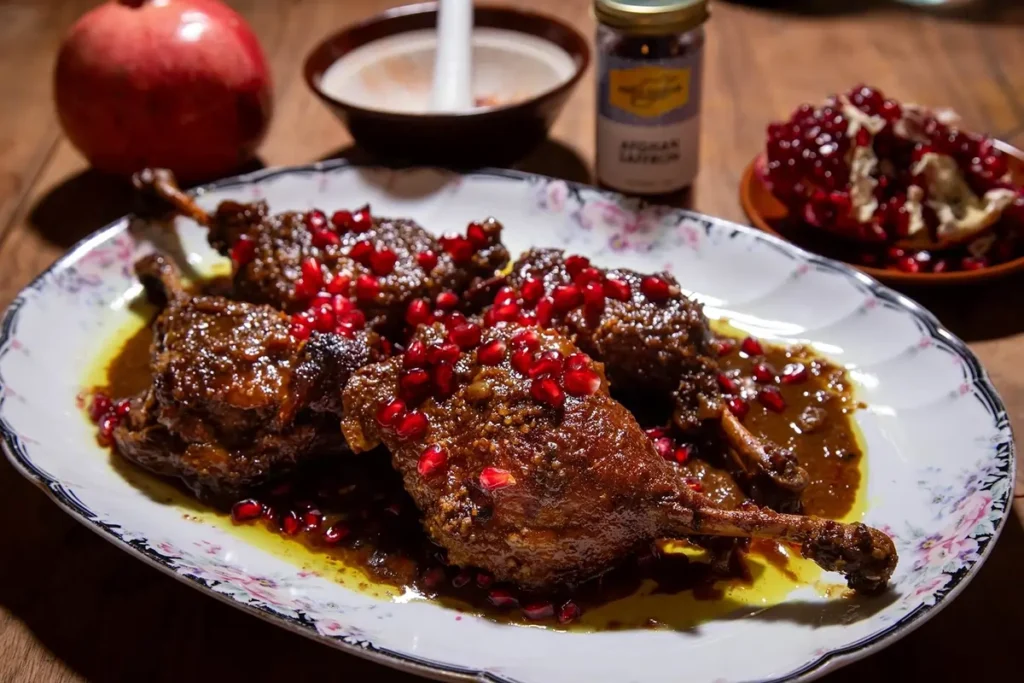
How to Cook “Khoresht-e-Fesenjoon”(Persian traditional dish)
Khoresht-e-Fesenjoon is a delicious and unique stew, known as a luxury meal between Iranian dishes, and is also known for its depth of flavor, striking appearance, and cultural significance. This Iranian dish blends walnuts and pomegranate to create a rich, tangy, and slightly sweet experience. In this guide, we’ll walk you through all you need to know about Fesenjoon, from its history to its recipe, cooking tips, and the perfect accompaniments.
History of Fesenjoon
Fesenjoon, sometimes spelled as Fesenjan, has its roots in the northern regions of Iran, especially around Gilan and Mazandaran. It dates back to the ancient Persian Empire, where walnuts and pomegranate were abundant and highly valued. The stew was traditionally served during festive occasions and has remained a culinary masterpiece in modern Iranian cuisine.
Why is Fesenjoon Famous?
Fesenjoon’s fame comes from its unique flavor profile and visual appeal. Unlike any Ghorme Sabzi, its combination of ground walnuts and pomegranate molasses creates a savory dish that’s both nutty and fruity. Its deep, mahogany color and velvety texture make it a centerpiece at Persian feasts. The dish is also often associated with celebration and family gatherings which is a big deal in Persian culture, adding a layer of nostalgia and significance.
Ingredients
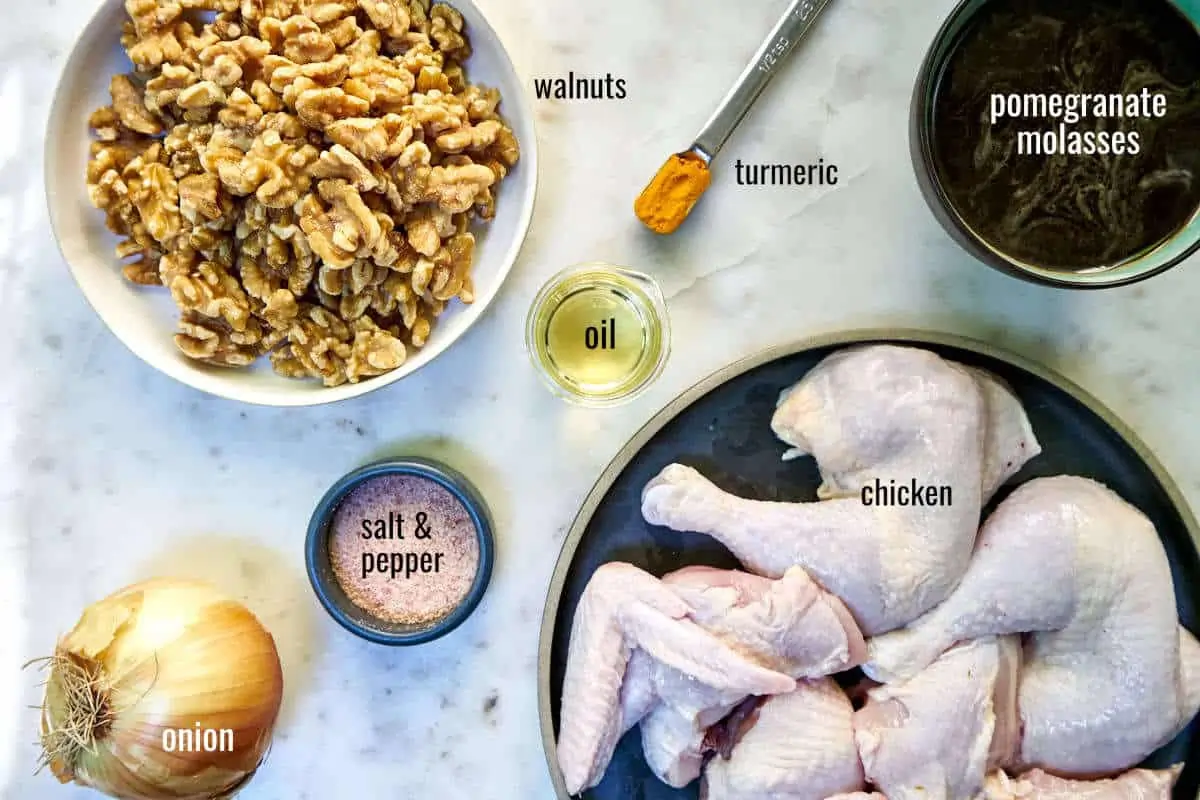
The classic ingredients for authentic Khoresht-e-Fesenjoon are:
- Chicken pieces (alternatively, duck or meatballs)
- Walnuts, finely ground (about 300g for 4 people)
- Pomegranate molasses (about 1/2 to 1 cup, depending on your taste)
- Onion, one large, finely chopped
- Water (enough to cover the ingredients)
- Salt and pepper, to taste
- Turmeric (optional, for extra flavor)
- Sugar (optional, to balance tartness)
- Cooking oil (for sautéing)
How to Cook Khoresht-e-Fesenjoon
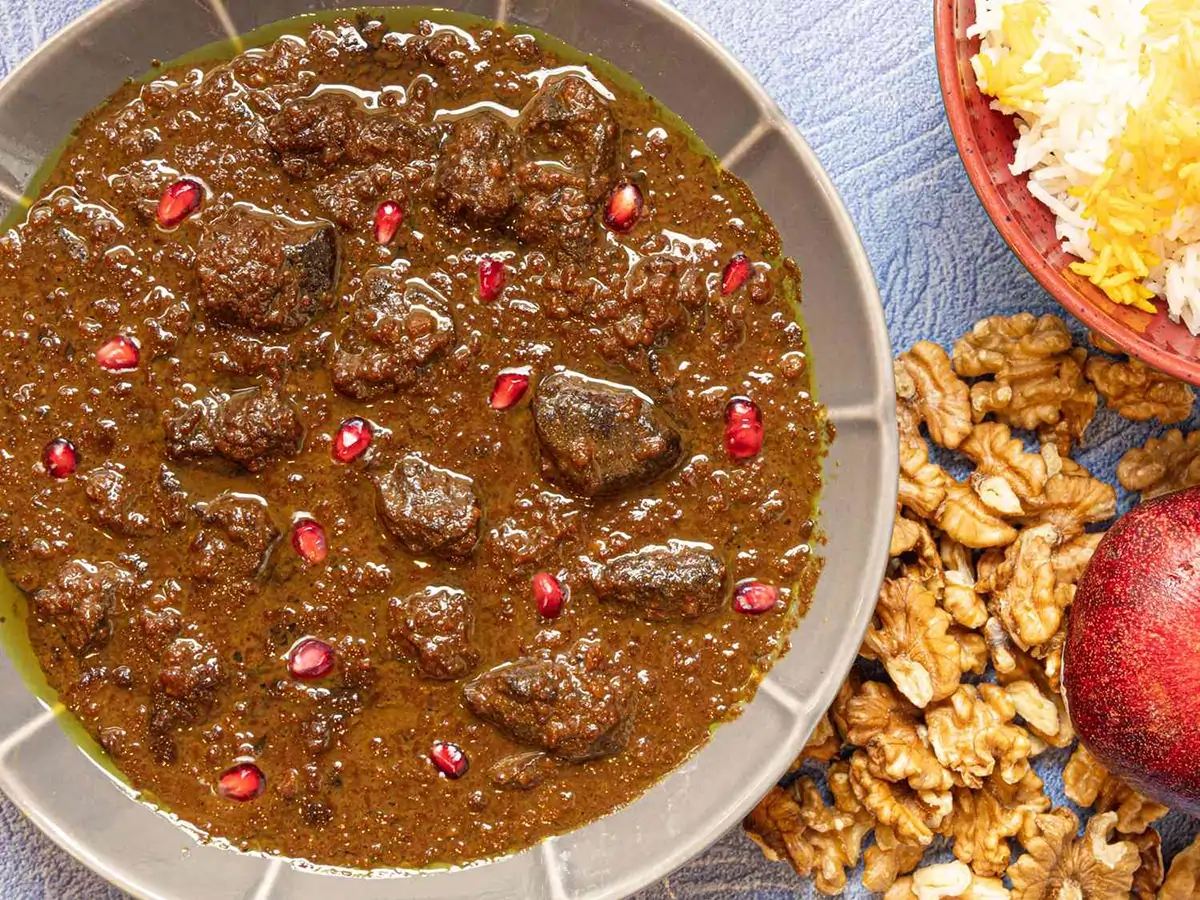
Step 1: Prepare the Walnuts
- Grind the walnuts in a food processor until they become a fine, almost peanut-buttery paste.
Step 2: Sauté the Onion and Chicken
- In a large pot, heat some oil and sauté the chopped onion until golden.
- Add the chicken pieces, salt, pepper, and a pinch of turmeric, and brown on all sides.
Step 3: Add Walnuts
- Add the ground walnuts to the pot. Stir continuously to prevent sticking and let the oil from the walnuts release.
Step 4: Add Water and Simmer
- Pour enough water to cover the ingredients. Bring to a gentle simmer. Cover and let it cook for about 1 hour, stirring occasionally.
Step 5: Add Pomegranate Molasses
- Add the pomegranate molasses gradually, tasting as you go. Simmer for another hour, allowing the stew to darken and thicken.
Step 6: Adjust Flavor
- Taste your Fesenjoon. If it’s too tart, add sugar to balance it. If too thick, thin with a little water; if too watery, continue simmering uncovered.
Step 7: Serve
- Once the oil from the walnuts appears on top and the stew is a deep brown, it’s ready to serve.
Tips to Cook Fesenjoon
- Quality Walnuts: Fresh, high-quality walnuts make all the difference.
- Low and Slow: Simmer the stew slowly to develop flavor and achieve the right texture.
- Taste as You Go: The tartness of pomegranate molasses can vary, so taste and adjust sweetness.
- Resting Time: Fesenjoon tastes even better the next day after the flavors meld.
What to Serve Beside Fesenjoon?
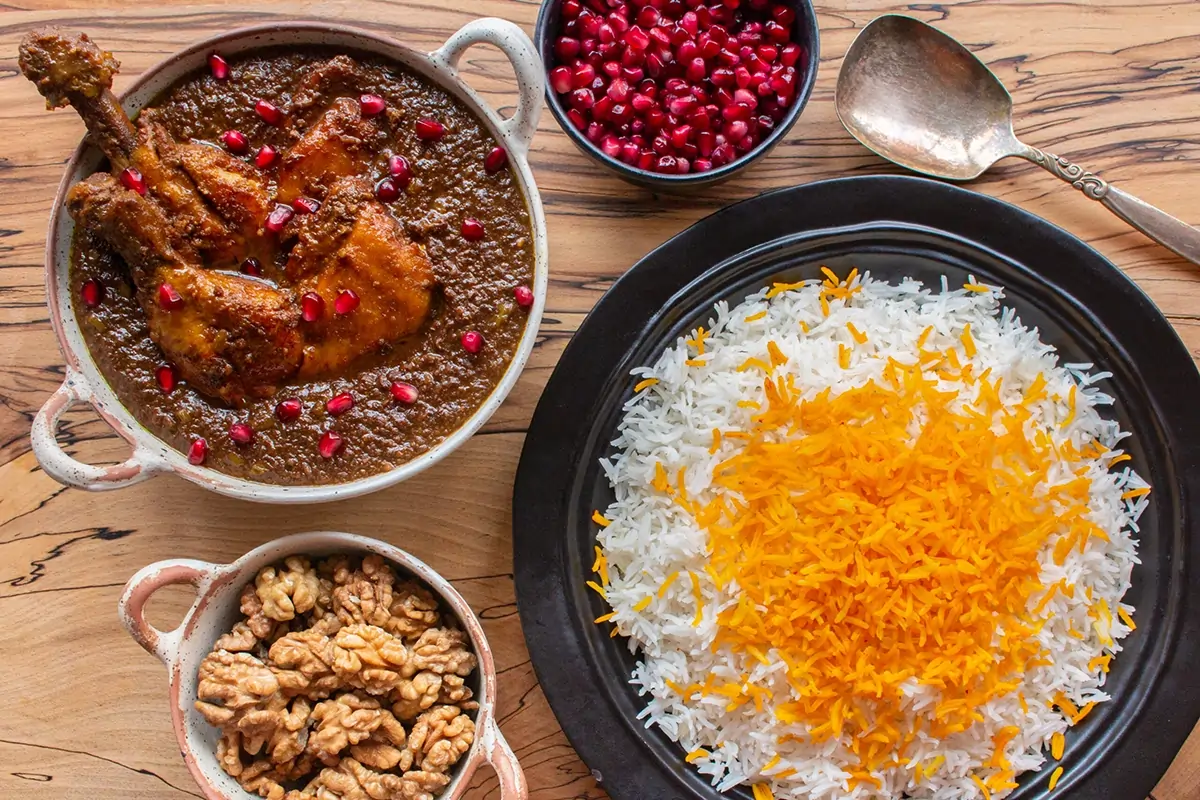
Fesenjoon is traditionally served over Persian saffron rice (chelow). Popular sides include:
- Sabzi khordan (fresh herbs)
- Torshi (pickled vegetables)
- Yogurt with cucumber or mint
- Lavash or other Iranian breads
Is Fesenjoon Healthy?
Fesenjoon is relatively healthy, especially if made with minimal oil and chicken instead of fattier meats. Walnuts provide healthy fats and omega-3s, while pomegranate brings antioxidants. Be mindful of the sugar content if you’re watching your intake, and enjoy this dish as part of a balanced diet.
In summary…
Khoresht-e-Fesenjoon is a showstopper on any Persian table. Its blend of flavors, historical significance, and versatility make it a must-try for any home cook interested in world cuisine. Give this recipe a try and experience the taste of Iranian tradition!

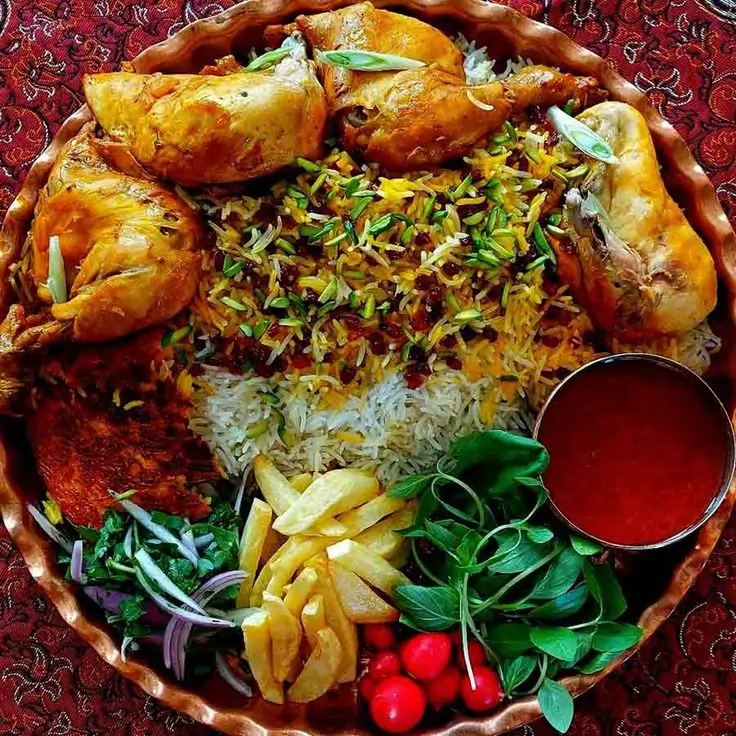
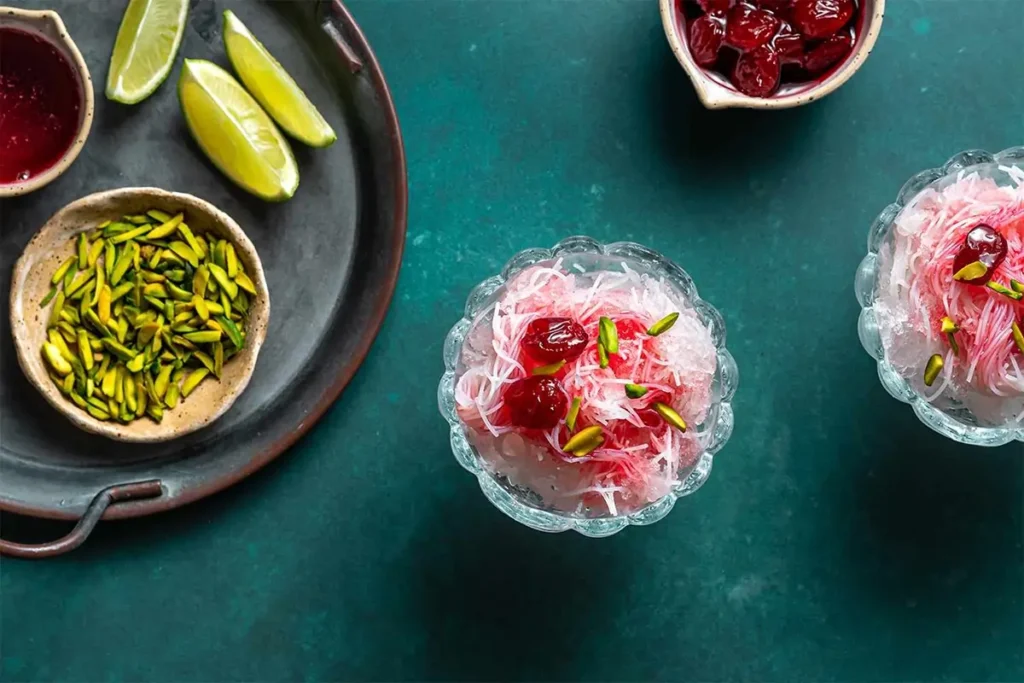


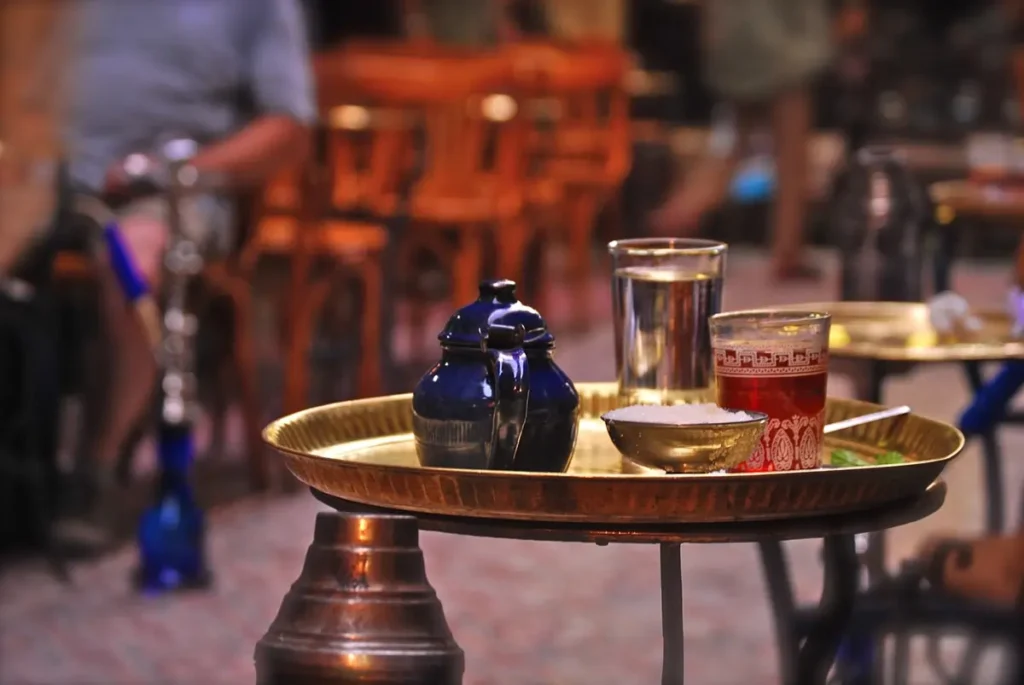
Responses